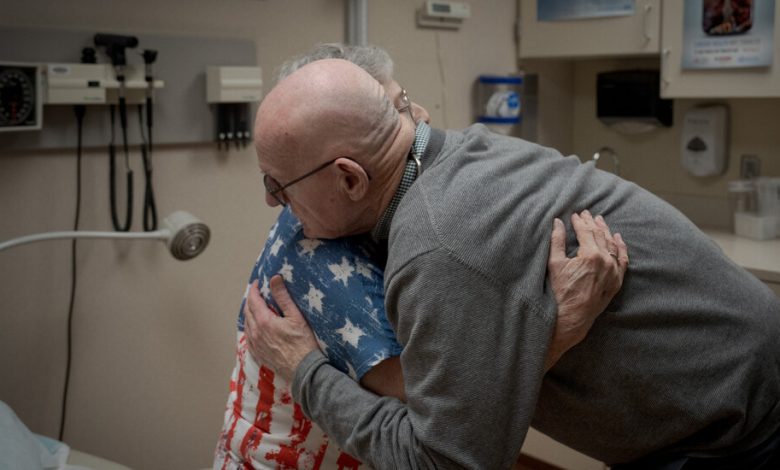Dr. Bob, 75, Knows Aging’s Toll. He Wonders if Biden and Trump Do.

He had become the local expert on what he called the “unwanted side effects of old age,” so Dr. Bob Ross, 75, rubbed arthritis cream onto his hands and walked into an exam room to see his seventh elderly patient of the day. He had been a doctor in the remote town of Ortonville, Minn., for nearly five decades, caring for most of its 2,000 residents as he aged alongside them. He delivered their children, performed their high school physicals, tended to their workplace injuries and now specialized in treating the wide-ranging symptoms of what it meant to grow old in America.
Listen to this article with reporter commentary
Open this article in the New York Times Audio app on iOS.
“What’s hurting you most today?” he asked Nancy Scoblic, 79.
“Let me take out my list,” she said. “Sore knees. Bad lungs. I’ve got a spot on my leg and pain in my shoulder. Basically, if it doesn’t hurt now, it’ll probably hurt later.”
She’d known him for most of her life, first as Bobby, whom her family sometimes babysat, then as Bob in high school, and now as Dr. Bob — the physician who had cared for her grandparents and also her grandchildren, and who almost everyone in Ortonville entrusted with their most vulnerable moments. It was behind the closed door of Dr. Bob’s exam room where hundreds of people filled out their advance directives, took cognitive evaluations and tested out their new walkers and hearing aids. It was Dr. Bob who delivered bad news with a farmer’s directness and then sat with families around a hospice bed for hours when the only thing left to do was to pray.
Most of his patients were white, geriatric and still largely self-sufficient — members of the same demographic as the country’s two leading presidential candidates in the 2024 election, 81-year-old Joe Biden and 77-year-old Donald Trump. The conversations at the heart of an election cycle were the same ones unfolding inside Bob’s office: What were the best ways to slow the inevitable decline of the human body? How did aging impact cognition? When was it possible to defy age, and when was it necessary to make accommodations in terms of decision-making or professional routines? These were the questions he asked his patients each day, and also himself.
He took Nancy’s hand and helped her onto the exam table, checking for circulatory problems as he felt her lymph nodes and her carotid artery for signs of swelling. He pressed his hands against her abdomen to seek out masses in the liver or enlargement of the spleen. It was the same geriatric exam he conducted at least 25 times each week, as Ortonville’s soybean farmers aged into retirement and America’s baby boomers arrived in his office showing more evidence of cancer, more bruises from falls, more diabetes, more strokes and more signs of memory loss and possible dementia.



